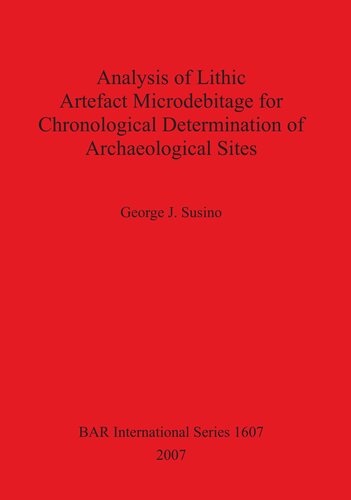

Most ebook files are in PDF format, so you can easily read them using various software such as Foxit Reader or directly on the Google Chrome browser.
Some ebook files are released by publishers in other formats such as .awz, .mobi, .epub, .fb2, etc. You may need to install specific software to read these formats on mobile/PC, such as Calibre.
Please read the tutorial at this link: https://ebookbell.com/faq
We offer FREE conversion to the popular formats you request; however, this may take some time. Therefore, right after payment, please email us, and we will try to provide the service as quickly as possible.
For some exceptional file formats or broken links (if any), please refrain from opening any disputes. Instead, email us first, and we will try to assist within a maximum of 6 hours.
EbookBell Team

5.0
70 reviewsThis study explores several different techniques to isolate and determine the age of lithic microdebitage in relation to archaeological deposits and sedimentation. This research proposes the integration of techniques available in archaeology and geomorphology to ascertain the shape and features of quartz microdebitage, and the use of OSL for direct dating of the artefacts and sediments. In this research, sedimentary samples from two archaeological sites in northern Australia are analysed using experimental methodologies to isolate and date quartz microdebitage, derived from the process of manufacturing stone tools. The central aim of this research is to apply the OSL dating technique for direct dating of quartz artefactual material. In order to achieve this it is necessary to unequivocally distinguish between microdebitage and the surrounding sediments. This is done by applying grain surface features techniques and microdebitage analysis to separate archaeological quartz and naturally occurring sedimentary quartz grains. The aims of this research are, therefore, to identify quartz microdebitage from archaeologically relevant deposits, and to use quartz microdebitage for OSL age determination, along with refinements in microdebitage analysis techniques. The principal novel aspect of this research is the dating of quartz microartefacts by OSL, although the combination of approaches taken, and their integration, is also innovative.